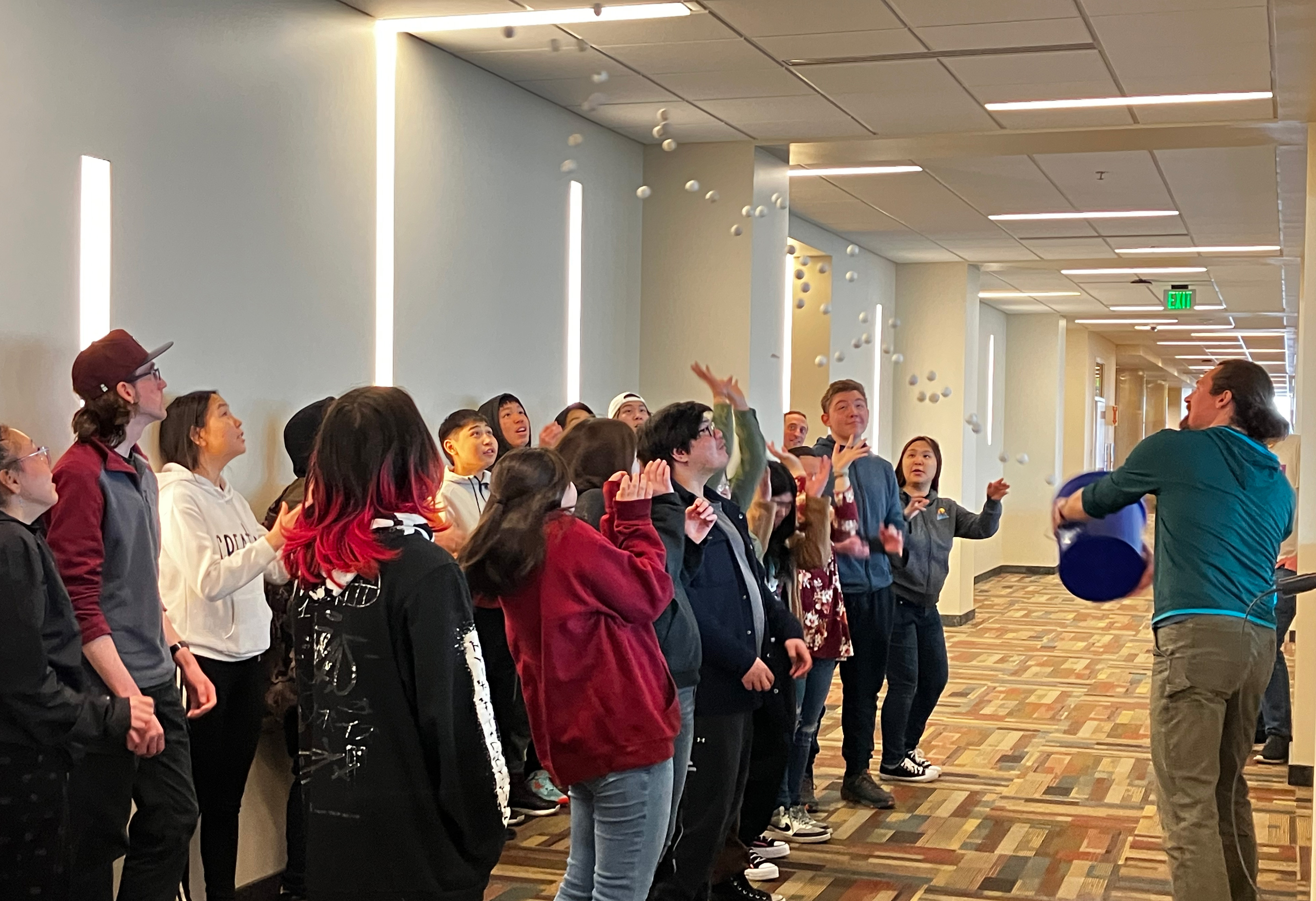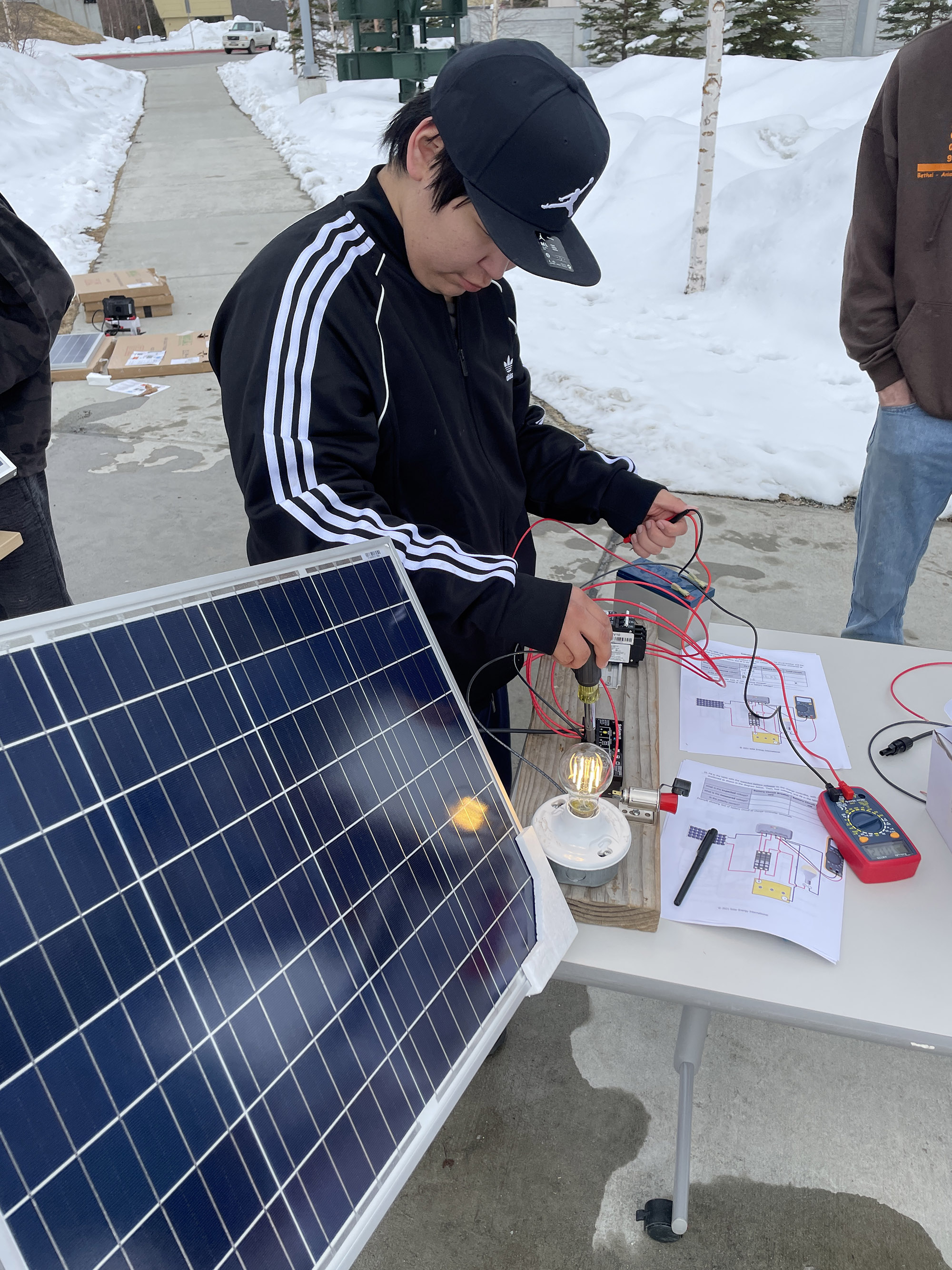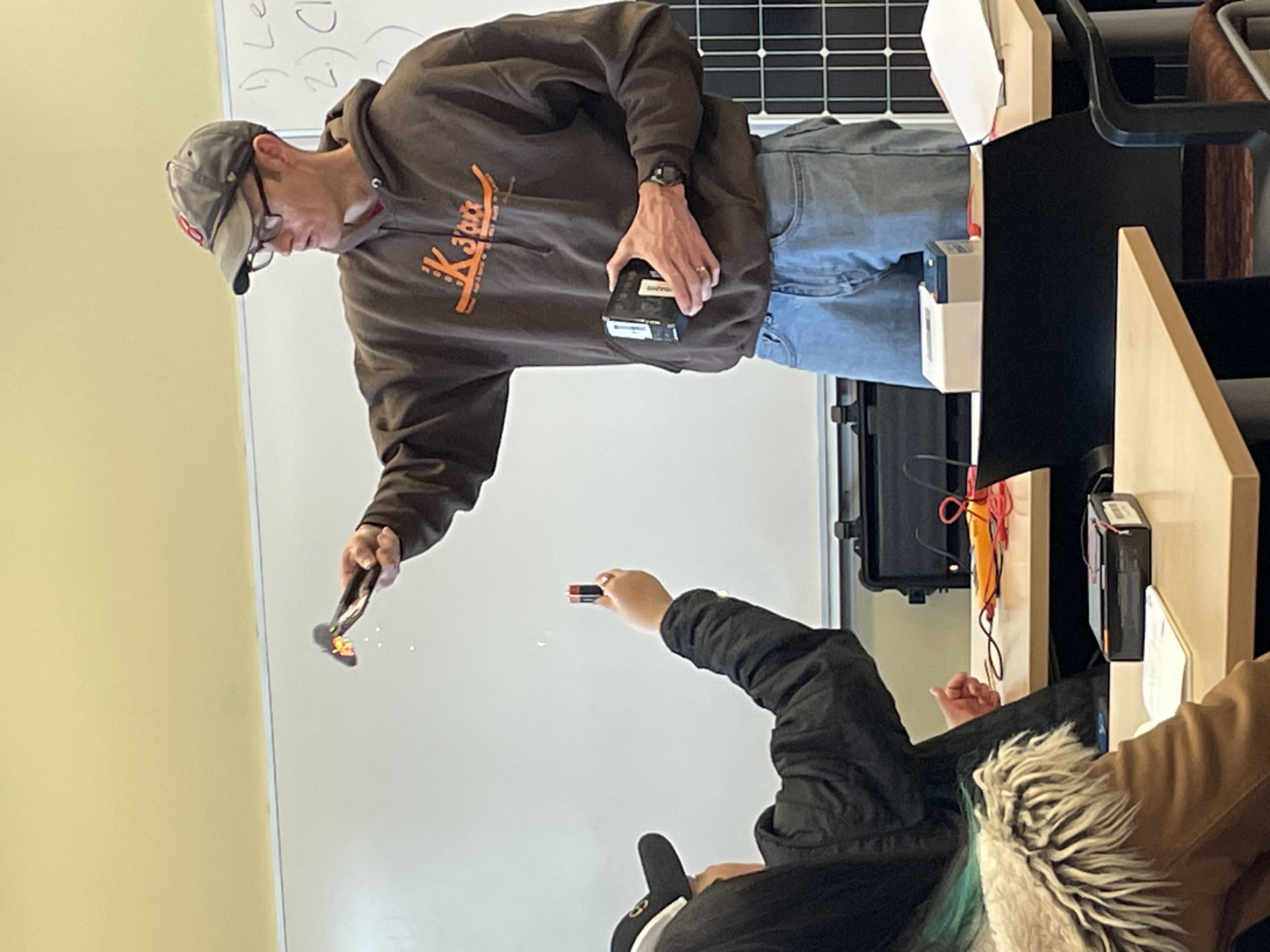T3 students expand their horizons through solar energy workshop
May 01, 2024

Tyler Katzmar from the Renewable Energy Alaska Project has students act like solar panels and catch photons.
Even on a personal scale, the shift to renewable energy can seem daunting. But, by starting simply with a growth mindset — the belief that abilities can be developed over time through effort and learning — and enthusiastic instructors and a few tools, students can gain the understanding to help this transition along.
Early in April, 20 high-school students from around the state of Alaska attended a two-day Solar Energy Basics workshop in Anchorage. They learned how to harness the energy from the sun to power loads — devices that consume electrical energy such as a heater or generator — in their homes, camps and communities.
In the first session, Tyler Katzmar from the Renewable Energy Alaska Project led students through a solar explorer lab, a hands-on series of activities that allow students to discover factors that affect solar energy. Students were given multimeters, small solar panels, and a variety of small loads such as DC motors, LEDs and buzzers, and tasked with measuring the voltage and current with various lighting configurations.
“The students were hooked,” Katzmar said. “When they tried to power a larger load, some students wired several solar panels together in series!”

A student builds a stand-alone power system that incorporates solar panels, charge controllers and batteries.
From there, students went deeper into the realm of electrical concepts such as voltage, current, resistance and power through demonstrations and scenarios. They saw how grid-connected photovoltaic systems work and built stand-alone power systems that utilized solar panels, charge controllers and batteries.
Chris Pike from ACEP’s Solar Technologies team was having as much fun as the students in his demonstrations. He donned his safety glasses and insulated gloves and showed students what happens when you short-circuit a battery, increase the resistance in a circuit and even how to make a better contact when soldering.

Chris Pike from ACEP’s Solar Technologies team shows students what happens when one short-circuits a battery.
The training was the latest opportunity for students working with the Teaching Through Technologies, or T3, Energy Club and included one UA credit towards their Occupational Endorsement in Sustainable Energy.
The workshop was hosted in partnership with the Alaska Center for Energy and Power, UAF Upward Bound Program, T3 Alaska Program, and Sustainable Energy Program at the UAF Bristol Bay campus, with additional support from the Office of Naval Research.
The Alaska Regional Collaboration for Technology Innovation and Commercialization Program, an ONR initiative, supports Alaska’s next generation of leaders through educational programs like T3. For more information about the T3 Energy Club, contact George Reising at gbskrabareising@alaska.edu.


